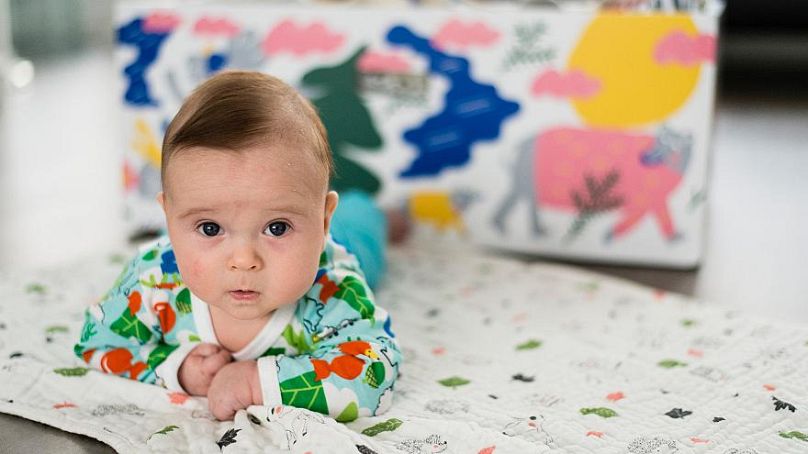Have a kid, win a fridge! Euronews looks at solutions to the 'issue' of low birth rates.
Italy will look at giving land to families who have a third child in a bid to reverse the country’s declining birth rate.
The plan, put forward by the far-right League party, was included in the government’s draft budget for next year.
Italy has the lowest birth rate in the European Union and it’s been falling every year since 2010, according to Eurostat.
The parcel of agricultural land — currently owned by the state — would be granted to parents who have a third child between 2019 and 2021.
Technically-speaking the donation would be granted for at least 20 years but there is confusion about who qualifies.
Lorenzo Fontana, Italy’s minister for family and disability, wants it to be available to married couples, rather than those bound by civil unions, reports Corriere Della Sera.
How have other European countries tried to increase their birth rates?
Poland
Poland’s government invested around €700,000 in a controversial publicity campaign encouraging citizens to “breed like rabbits”.
The 30-second video featured rabbits munching on lettuce and carrots while a rabbit “narrator” revealed the secrets of producing many offspring: exercising, a healthy lifestyle and avoiding stress.
At the end of the advert, a couple enjoying a romantic picnic make a brief appearance.
Russia
Vladimir Putin said in 2006 that one of Russia’s most serious challenges was its demographic crisis.
One region, to address its declining birth rate, created a special bank holiday designed to give couples the time to make a child.
Every September 12 in Ulyanovsk, the birthplace of Vladimir Lenin, the Day of Conception takes place.
If a couple manages to have a child exactly nine months later — the following June 12 — they were given a prize.
One couple was given a sports utility vehicle while others were handed television, fridges or washing machines.
Finland
While not a recent development, Finland originally introduced special baby boxes to partly address a declining birth rate.
The state-sponsored packages, first given to new mothers in 1938, are full of clothing and other useful items.
When they were first introduced the box would double up as a bed as the poorest homes in pre-war Finland didn’t necessarily have a clean place for the baby to sleep.
Denmark
A Danish travel agency, Spies Travel, first used patriotism to encourage couples to have more babies.
Their viral video in 2014, entitled Do It For Denmark!, aimed to help the government find a solution to the country’s declining birth rate.
They followed this up with another video, this time called Do It For Mom, which attempted to encourage grandmas to play their part to help their sons and daughters find the time to get intimate.
Spain
Spain attempted to address its falling birth rate by appointing a special 'sex tsar' last year.
Edelmira Barreria Diz, a demographic expert and senator in the Galician parliament, was tasked with getting Spaniards to produce more babies.
It comes after deaths outstripped births in 2014 for the first time since 1941.



